TETRIS GEOLÓGICO
[Santa Maria - Açores]

EARTHCACHE
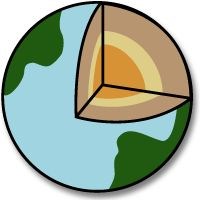
PORTUGUÊS

SANTA MARIA
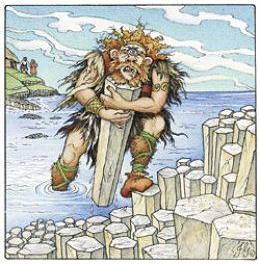
“Santa Maria é ilha mais ”velha” dos Açores, remontando as lavas mais antigas a uma idade superior a 10 milhões de anos.
Ao contrário do que é voz corrente nas ilhas, Santa Maria é de natureza vulcânica. Contudo, a sua idade elevada, comparativamente às restantes ilhas do arquipélago, determina que as formas vulcânicas originais estejam já muito degradadas e sejam de difícil reconhecimento. Em virtude do forte levantamento sofrido pela ilha desde finais do Pliocénico, Santa Maria é a única ilha dos Açores onde se encontram expostas importantes sequências rochosas vulcânicas e sedimentares (fossilíferas) de génese submarina. Estas permitem reconstituir uma história complexa de variações relativas do nível do mar que abrange os últimos 10-8 milhões de anos (Ma) da história do Atlântico NE.
A ilha emergiu no Miocénico (há aproximadamente 10-8 Ma), sendo a mais antiga do arquipélago. A atividade vulcânica estendeu-se até ao Pliocénico (há aproximadamente 2 Ma), com fases alternadamente subaéreas e submarinas, efusivas e explosivas. As sequências sedimentares, intercaladas nas séries vulcânicas, ou sobrepostas àquelas, datam do Miocénico final (≈5,5 Ma) até ao Quaternário (menos de 130.000 anos?).
Do ponto de vista vulcanológico, ressalta, em Santa Maria, a ocorrência de abundantes afloramentos de piroclastos e de derrames basálticos submarinos (lavas em almofada), particularmente ao longo do litoral (com exceção da costa oeste), desde o Figueiral até à Cré. Este tipo de materiais não se encontra exposto em nenhuma outra ilha açoriana, por se encontrarem cobertos por lavas subaéreas mais recentes ou abaixo do nível do mar atual”.

VÁRIOS TIPOS DE DISJUNÇÃO

Existem dois tipos” de disjunção: a prismática e a esferoidal!
A lava depois de arrefecer à superfície e ao sofrer a ação dos agentes de geodinâmica externa, pode sofrer um tipo de erosão que origina uma espécie de esferas concêntricas com camadas que se apresentam cada vez menos alteradas para o interior e um núcleo bem conservado. A rocha original entre estas esferas apresenta-se por norma também muito alterada quimicamente e desagregada fisicamente, ou seja, apodrecida.
Existe uma outra forma de disjunção em lava designada por disjunção prismática, muitas vezes desenvolvida em rochas ácidas, embora também surja em lavas básicas. Podem ver exemplares magníficos deste outro tipo de disjunção na ilha de Santa Maria e o caso mais famoso mundialmente é a Calçada de Gigantes ou Giant Causewayna Irlanda do Norte, mas este fenómeno também existe, um pouco por todas as ilhas dos Açores, sendo os mais conhecidos: a Rocha dos Bordões (a habitual e a submarina…) na ilha das Flores, a ribeira da Malbusca (na ilha de Santa Maria) e na Baía das Agualva (na ilha Terceira).
DISJUNÇÃO PRISMÁTICA

Disjunção prismáticaou disjunção colunar (paisagem de origem basáltica) é um processo geológico tectónico que se dá quando, ao arrefecer de alta temperatura, o basalto sofre tensão por contração e fragmenta-se em colunas com forma de prismas, geralmente em sentido perpendicular à superfície de arrefecimento e com a forma de prismas hexagonais, quase perfeitos, que se geram no seio da escoada.
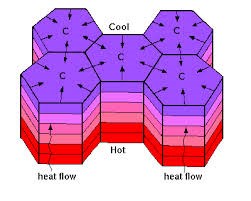
Após uma erupção, a lava escorre e arrefece rapidamente nos bordos. O interior continua muito quente. As diferenças de temperatura fazem com que, o basalto, se parta em prismas hexagonais perfeitos. Este fenómeno tem a ver com a viscosidade dos materiais e com as altas e bruscas variações de temperatura, a que são sujeitos.
Por ocorrer geralmente na superfície, o padrão geométrico regular na tem aspeto peculiar de calçamento. Ocorre geralmente em materiais de origem ígnea, sills, diques de rochas básicas ou intermediárias.
DISJUNÇÃO ESFEROIDAL
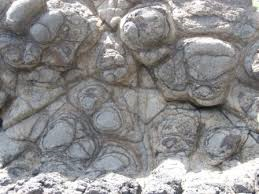
Divisão das rochas em corpos geométricos mais ou menos esferoidais em consequência de fenómenos de consolidação magmática, de meteorização, etc.
A disjunção esferoidal, também designada disjunção em bolas, é frequente nas rochas magmáticas básicas, como doleritos e gabros, mas encontra-se, também, em dioritos, granodioritos e granitos.
EXFOLIAÇÃO E DISJUNÇÃO ESFEROIDAL

Duas formas de fragmentação rochosa não relacionadas diretamente a fracturas preexistentes são a exfoliação e a disjunção esferoidal. A exfoliação é um processo de meteorização física pelo qual placas grandes e achatadas ou curvas de rocha são fraturadas e destacadas de um afloramento. A disjunção esferoidal consiste, também, na fragmentação e separação de camadas curvas de um bloco geralmente esférico mas, usualmente, numa escala muito menor. O seu mecanismo permanece desconhecido mas pode resultar de fendas paralelas à superfície do afloramento causadas por alteração química ou da distribuição diferencial de meteorização química e mudanças de temperatura.

PARA REALIZAR E REGISTAR ESTA EARTHCACHE:
PERGUNTAS:
Para “encontrar/registar” esta cache deverá: provar que esteve no local e responder às seguintes questões, enviando um email/mensagem de Geocaching, com as respostas, em português ou em inglês, para o nosso perfil.
Só depois, de enviar as respostas, e conforme as “guidelines” para as Earthcaches, deverá efetuar o seu registo!
Serão removidos todos os registos que não obedeçam a estes requisitos.
1. Estudando o tema geológico proposto nesta earthcache, responde às seguintes questões:
a) Qual a diferença entre disjunção prismática e disjunção esferoidal?
b) Identifica pelo menos três locais dos Açores, localizados em três ilhas distintas, onde existe disjunção prismática e outros três locais onde existe disjunção esferoidal.
2. A partir da tua visita e observações ao GZ desta earthcache, responde às seguintes questões:
a) Identifica o tipo de disjunção presente no GZ.
Será esferoidal? Prismática? Ou outra?
b) Estima a área da “pedra” relativa a esta disjunção.
c) Identifica o tipo ou tipos”, de rocha (ou rochas) presente neste local.
d) Classifica as “pedras” presentes neste paredão, quanto: à cor, dureza e granulosidade de cada um destes “tipos” de pedra.
e) Existem prismas presentes neste paredão? A sua forma é regular ou irregular?
f) Existem “bolas” neste paredão? Qual a sua cor?
3.
TAREFA OBRIGATÓRIA:Deverá tirar uma foto sua, onde você apareça (ou com um papel/placa onde conste o seu nickname e a data da visita) e que comprove a sua presença no GZ desta EC - NÃO META SPOILERS. Esta foto deverá ser colocada no seu registo ou enviada por email ou sistema de mensagens de Geocaching, para o owner!

Não responderemos ao seu contato, a não ser que haja algum “problema” com as suas respostas ou registo.


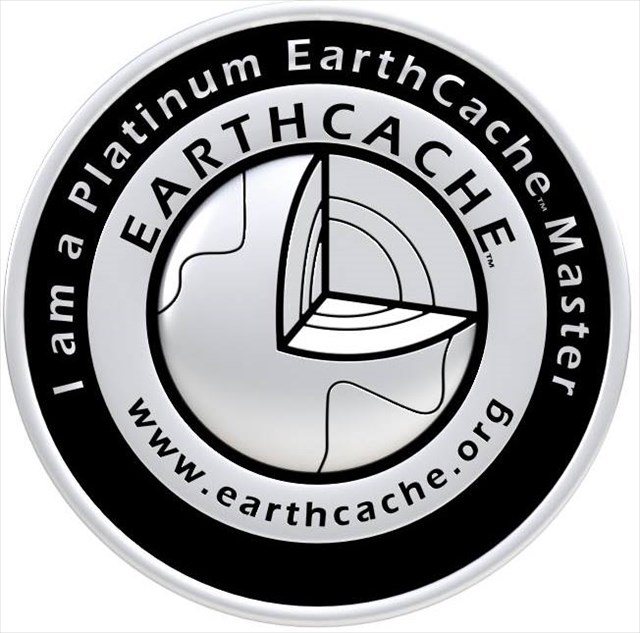

TETRIS GEOLOGICAL
[Santa Maria – Azores]

ENGLISH

EARTHCACHE
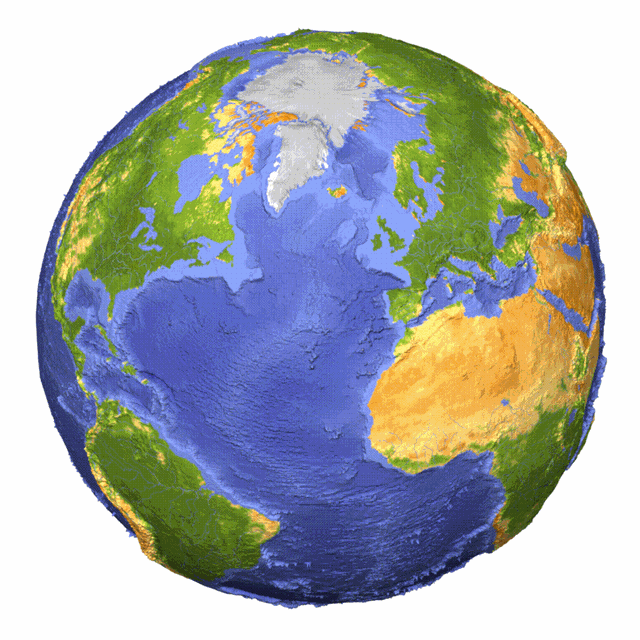
SANTA MARIA ISLAND
"Santa Maria island is more" old "the Azores, dating older lavas an older than 10 million years.
Contrary to what is commonly said in the islands, Santa Maria is volcanic in nature. However, his advanced age, compared to the other islands of the archipelago, determines that the original volcanic forms are already very degraded and are difficult to identify. Because of the strong lifting suffered by the island since the late Pliocene, Santa Maria is the only island of the Azores where important lie exposed volcanic and sedimentary rock sequences (fossiliferous) underwater genesis. These allow to reconstruct a complex history of variations on sea level that covers the last 10 million to 8 million years (Ma) in the history of the NE Atlantic.
The island emerged in the Miocene (there are about 10-8 Ma), is the oldest of the archipelago. Volcanic activity extended to the Pliocene (there are about 2 Ma), with stages alternately subaerial and underwater, effusive and explosive. The sedimentary sequences, interspersed in the volcanic series, or overlapping those, dating from the late Miocene (≈5,5 Ma) to the Quaternary (less than 130,000 years?).
The volcanological point of view, points out in Santa Maria, the occurrence of abundant outcrops of pyroclastic rocks and submarine basaltic (pillow lava), particularly along the coast (except the west coast) from the Figueiral to Chalk. This type of material is not exposed in any other Azorean island, because they are covered by lavas latest subaerial or below current sea levels. "
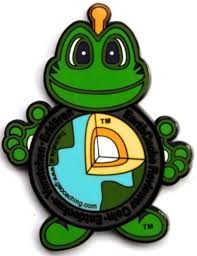
VARIOUS TYPES OF DISJUNCTION
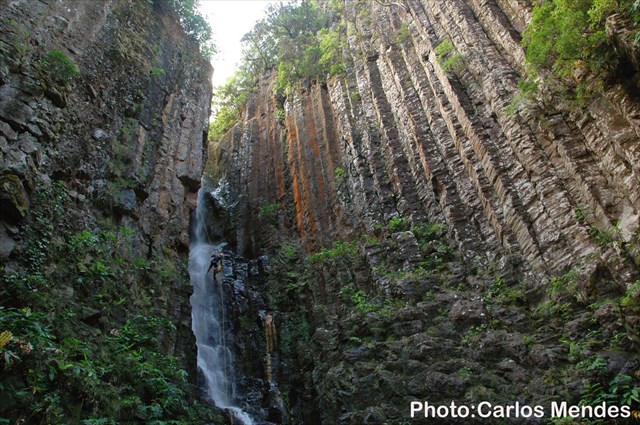
There are two types "of disjunction: the prismatic and spheroidal!
Washes after cooling to the surface and undergo the action of external agents geodynamic, you can undergo a type of erosion that causes a sort of concentric spheres with layers that have fewer changed to the interior and a well preserved nuclei. The original rock between these spheres presents very generally also chemically altered and physically broken down, or rotten.
There is another way of disjunction washing designated disjunction prismatic often developed in acidic rocks, although it also appears in basic lava. You can see magnificent examples of this other kind of disjunction on the island of Santa Maria and the most famous case world is the Causeway Giant or Giant Causeway in Northern Ireland, but this phenomenon also exists, just for all the islands of the Azores, and the best known: the “Rocha dos Bordões” (the usual and underwater ...) on the island of Flores, the stream of Malbusca (on the island of Santa Maria) and Bay of Agualva (on Terceira).
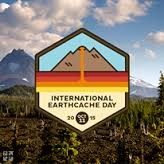
DISJUNCTION PRISMATIC
Disjunction prismatic or columnar jointing (basaltic landscape) is a tectonic geological process that occurs when, to cool high temperature basalt undergoes contraction by tension and splintered into column-shaped prisms, generally perpendicular to the surface cooling and the shape of hexagonal prisms almost perfect, which are generated within the drained.
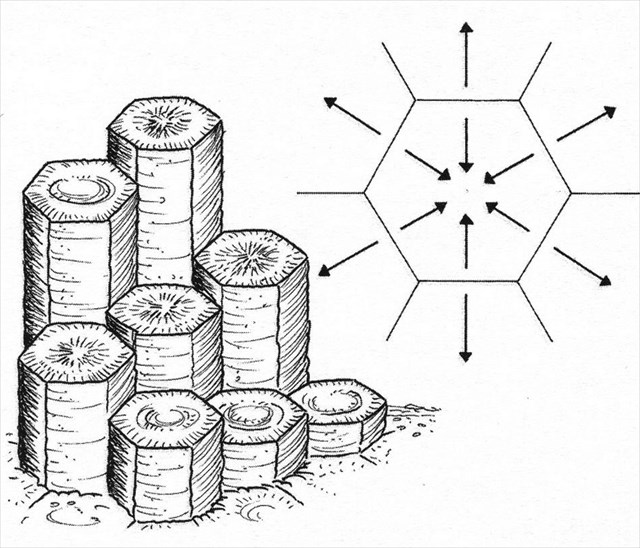
After an eruption, lava flows and cools quickly on the lips. The interior is still very hot. temperature differences cause, basalt, is broken into hexagonal prisms perfect. This phenomenon has to do with the viscosity of materials with high and sudden temperature variations, which they are subject.
By generally occur on the surface, the regular geometric pattern in has peculiar aspect of pavement. usually occurs in igneous materials, sills, basic or intermediate rocks dykes.
DISJUNCTION SPHEROIDAL
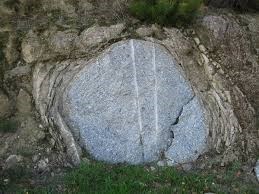
Division of rocks more or less spheroidal geometrical bodies as a result of magmatic consolidation phenomena, weathering, etc.
The spheroidal disjunction, also called disjunction in balls, is common in basic magmatic rocks like dolerite and gabbro, but is also in diorite, granodiorite and granite.
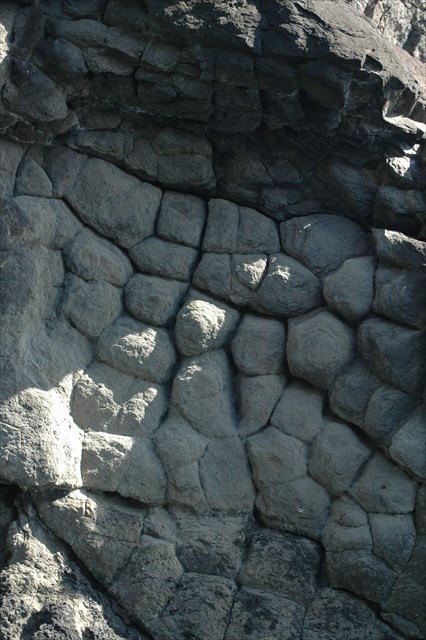
SCRUB AND DISJUNCTION SPHEROIDAL
Two forms of rock fragmentation not directly related to pre-existing fractures are exfoliating and spheroidal disjunction. Exfoliation is the process by which physical weathering and large flat plates or curved rock is fractured and detached from an outcrop. The spheroidal disjunction is also the fragmentation and separation of layers curves of a generally spherical block but usually on a much smaller scale. Its mechanism remains unknown but may result in cracks parallel to the surface of the outcropping caused by chemical change or difference distribution chemical weathering and temperature changes.

TO PERFORM AND LOG THIS EarthCache:
QUESTIONS:
To "find / register" this cache must: prove that visited the site and answer the following questions by sending an email / message Geocaching, with answers (in Portuguese or in English, only) to our profile.
Only later, sending the answers, and as the "guidelines" for EarthCaches should make your registration! They will be removed from all records that do not meet these requirements.
1. Studying the geological theme proposed this EarthCache, answers the following
questions:
a) What is the difference between prismatic disjunction and disjunction
spheroidal?
b) Identify at least three places in the Azores, located on three different islands,
where there prismatic disjunction and three other places where there is
disjunction spheroidal.
2. From your visit and comments to GZ EarthCache this, answer the following
questions:
a) Identify the type of disjunction present in GZ.
Is spheroidal? Prismatic? Or another?
b) Estimated the area of the "rock" on this disjunction.
c) Identify the type or types "of rock (or rocks) present at this location.
d) Sorts the "stones" present in this wall, as: color, hardness and granularity
of each of these "types" of stone.
e) There are prisms present in this wall? Its shape is regular or irregular?
f) There are "balls" in this wall? What is your color?
3.
TASK (not optional): You must take a picture of yourself, where do you show up, (or with a paper / plaque with your geocaching nickname and the date of the visit) and that proves your presence in the GZ of this EC - no spoilers please. This photo must be placed in your log or sent by email or Geocaching messaging system, to the owner!
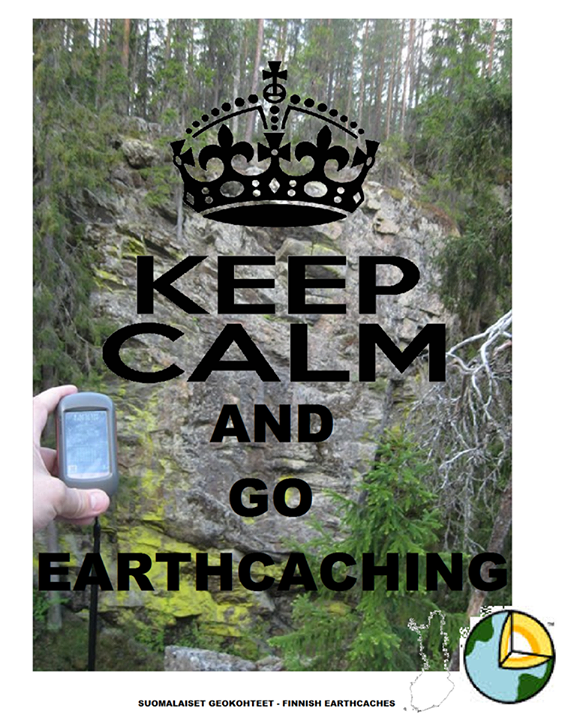
We do not respond to your touch, unless there is a "problem" with their answers or register.
